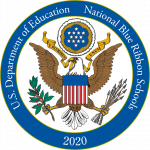“Morah Judy,” I hear. “Morah Judy, when is the art walk?” “Will my picture be there?” “Morah Judy, can I have more time to work on my piece?” Over the last couple of weeks, so many students have asked when the art walk is, and have shared their excitement about it with me. I love the questions because that means they know what that night is about and everything it involves. They are excited to show all the pieces they have created throughout the year. They are filled with pride at the opportunity to express themselves and are proud of their creations.
For me as an art teacher, this is the peak. The most important part of teaching art for me is that the artist is passionate about their creation, that they can let go and feel comfortable, that they enjoy the process and are thrilled to present the fruits of their labor.
A few weeks before Passover I was working with the third graders to create a cover for their haggadot. Before the students began to sketch out their ideas, we talked about Passover and what the holiday meant to them. After each student sketched their ideas, I spoke with them individually and asked them questions about their family and rituals. When the students finished their covers, I heard many of them express that they loved what they had created, and couldn’t wait to share their creations with their families.
Art is a vehicle to express emotion, and to process. Last week, several students were working on art pieces for Yom HaShoah. One seventh grader was trying to create a piece showing darkness, death, and hope, all at the same time. When she was almost finished, we discussed the meaning of those emotions and what she wanted to portray. We went back and forth talking about what she could change. Ultimately, with the ability to talk it out and reflect, the student found her connection and was able to finish the piece and convey her message.
Why is the Art Walk so important to me?
This night brings our whole community together to listen to beautiful music performed by students, to walk around our hallways and take pride in our school, all the while enjoying all of the creations in a museum setting. Think of the difference between preparing a quick meal that you simply throw on a paper plate and eat, or the meal that you spend precious minutes serving and displaying, accentuating the inherent beauty of each ingredient. One you simply take in; the other truly nourishes.
This year, the kindergarten classes have been focusing on what plastic waste does to the ocean. There will be an installation created out of recycled plastic, expressing the beauty of what you can do with recycled materials instead of throwing them out, as well as showing our students’ deep commitment to protecting our earth and making a difference for the future. Our students work always has two aims: to display their learning and to express their thought processes and emotional reactions to the information they have just learned. Art at Yavneh is making learning visible.


